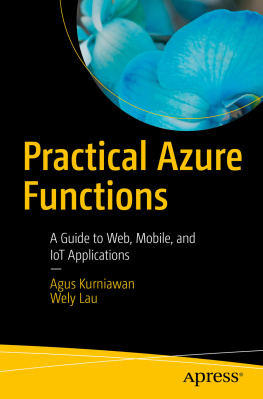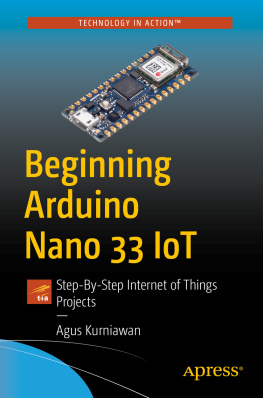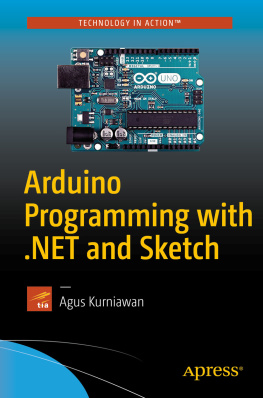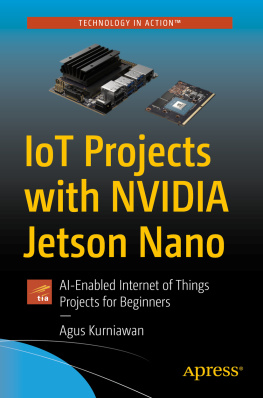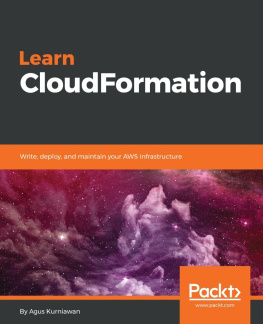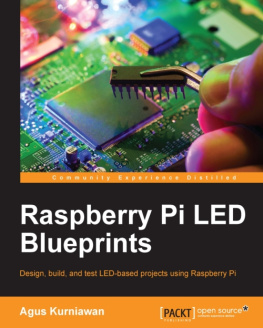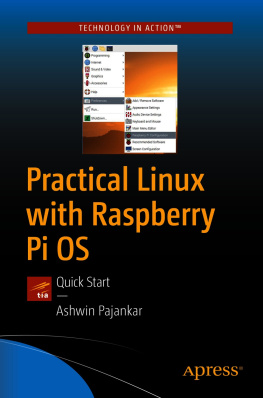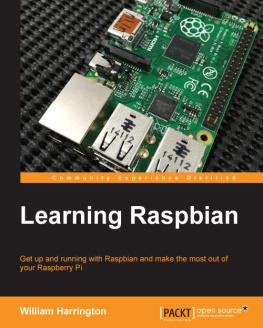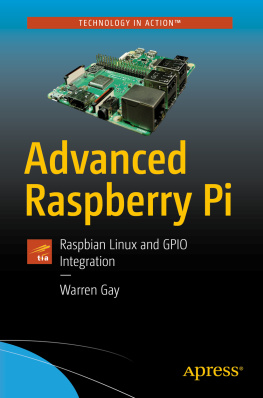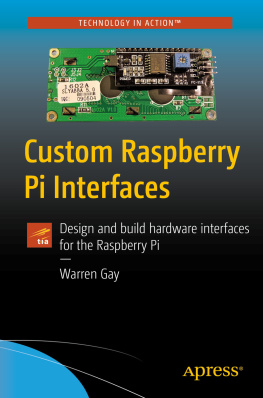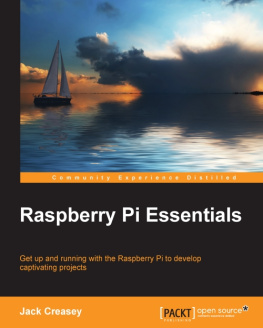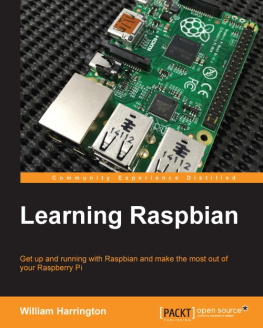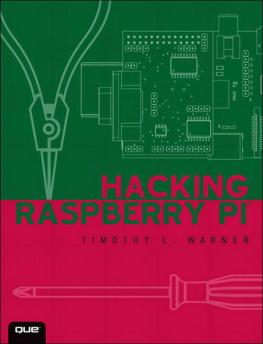Agus Kurniawan
Raspbian OS Programming with the Raspberry Pi IoT Projects with Wolfram, Mathematica, and Scratch
Agus Kurniawan
Depok, Indonesia
Any source code or other supplementary material referenced by the author in this book is available to readers on GitHub via the books product page, located at www.apress.com/978-1-4842-4211-7 . For more detailed information, please visit http://www.apress.com/source-code .
ISBN 978-1-4842-4211-7 e-ISBN 978-1-4842-4212-4
https://doi.org/10.1007/978-1-4842-4212-4
Library of Congress Control Number: 2018964829
Agus Kurniawan 2019
This work is subject to copyright. All rights are solely and exclusively licensed by the Publisher, whether the whole or part of the material is concerned, specifically the rights of translation, reprinting, reuse of illustrations, recitation, broadcasting, reproduction on microfilms or in any other physical way, and transmission or information storage and retrieval, electronic adaptation, computer software, or by similar or dissimilar methodology now known or hereafter developed.
Trademarked names, logos, and images may appear in this book. Rather than use a trademark symbol with every occurrence of a trademarked name, logo, or image we use the names, logos, and images only in an editorial fashion and to the benefit of the trademark owner, with no intention of infringement of the trademark. The use in this publication of trade names, trademarks, service marks, and similar terms, even if they are not identified as such, is not to be taken as an expression of opinion as to whether or not they are subject to proprietary rights.
While the advice and information in this book are believed to be true and accurate at the date of publication, neither the authors nor the editors nor the publisher can accept any legal responsibility for any errors or omissions that may be made. The publisher makes no warranty, express or implied, with respect to the material contained herein.
Distributed to the book trade worldwide by Springer Science+Business Media New York, 233 Spring Street, 6th Floor, New York, NY 10013. Phone 1-800-SPRINGER, fax (201) 348-4505, e-mail orders-ny@springer-sbm.com, or visit www.springeronline.com. Apress Media, LLC is a California LLC and the sole member (owner) is Springer Science + Business Media Finance Inc (SSBM Finance Inc). SSBM Finance Inc is a Delaware corporation.
Introduction
Raspberry Pi is a mini computer that you can operate as a normal computer. The Raspberry Pi board is one of recommended development boards with IoT platforms. There are many features on the Raspbian OS and Raspberry Pi boards that you can use to build IoT programs in various scenarios. Raspberry Pi is designed to enable you to scale its capabilities through GPIO pins that are suitable for your business and research needs.
Raspbian OS Programming with the Raspberry Pi is a quick reference to build programs on top of the Raspbian OS on a Raspberry Pi board. Youll start by learning Raspbian shells to develop programs. You will go through a step-by-step guide with project samples to learn the ins and outs of the Raspbian OS development. You will also learn about the Wolfram language, Mathematica, and Scratch.
Who This Book Is For
This book is designed for anyone who wants to get started with Raspberry Pi and Raspbian. Readers do not need knowledge of the Linux OS or of embedded systems.
How This Book Is Organized
This book is designed with a step-by-step approach. You will learn how to set up Raspbian on a Raspberry Pi board. You will also learn how to develop programs on Raspbian. This book explains how to work with Wolfram, Mathematica, and Scratch. Some scenario problems are provided so you can practice during the learning process.
Required Software, Materials, and Equipment
In general, you need a Raspberry Pi 3 board and a microSD card with Raspbian OS installed. All required software in this book is installed with the Raspbian OS.
Acknowledgments
We would like to thank Apress for all their help in making this book possible. Specifically, we would like to thank Aaron Black, our acquisitions editor, and Jessica Vakili, our coordinating editor, for helping us complete the Raspbian book.
Special thanks to our development editor, James Markham, and technical reviewers, Chaim Krause and Massimo Nardone, for all of their suggestions during the editorial review process that helped make this a great book.
We would also like to thank the Raspberry Pi and Raspbian communities anywhere in the world for contributing and making learning Raspberry Pi with Raspbian easy.
Last but not least, a thank you to my wife, Ela and my children, Thariq and Zahra, for their great support while I completed this book.
Table of Contents
About the Author and About the Technical Reviewer
About the Author
Agus Kurniawan
is a lecturer, researcher, IT consultant, and an author. He has 17 years of experience in various software and hardware development projects, delivering materials in training and workshops, and technical writing. He has been awarded the Microsoft Most Valuable Professional (MVP) award 14 years in a row.
His topic interests are software engineering, embedded system, networking, and security system. He has been working as lecturer and researcher at the Faculty of Computer Science, Universitas Indonesia. Currently, he is pursuing a PhD in computer science at the Freie Universitt Berlin, Germany. He can be reached on his blog at http://blog.aguskurniawan.net and Twitter at @agusk2010 .
About the Technical Reviewer
Massimo Nardone
has more than 22 years of experiences in security, web/mobile development, cloud, and IT architecture. His true IT passions are security and Android.
He has been programming and teaching how to program with Android, Perl, PHP, Java, VB, Python, C/C++, and MySQL for more than 20 years.
He holds a Master of Science degree in Computing Science from the University of Salerno, Italy.
He has worked as a Project Manager, Software Engineer, Research Engineer, Chief Security Architect, Information Security Manager, PCI/SCADA Auditor, and Senior Lead IT Security/Cloud/SCADA Architect for many years.
Technical skills include: Security, Android, Cloud, Java, MySQL, Drupal, Cobol, Perl, web and mobile development, MongoDB, D3, Joomla, Couchbase, C/C++, WebGL, Python, Pro Rails, Django CMS, Jekyll, Scratch, etc.
He currently works as Chief Information Security Office (CISO) for Cargotec Oyj.
1. Introduction to Raspberry Pi
Raspberry Pi is a development board that can be applied to build IoT applications. Various sensors and actuator devices can be attached to the board. In this chapter, we explore Raspberry Pi and cover its models. We also learn how to set up the board for the first time.


